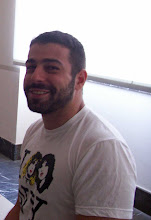
I realize that I’ve neglected (nay, abandoned) this Blogchen for the past couple of weeks. It’s been crazy busy here—I’ve started two jobs, and I’m in the middle of moving to a new place in Mitte between Bernauer Strasse and Rosenthaler Platz.
I was at the movies last week (on Kinotag admission is only 4,50 Euros!) and I saw the trailer for Der Baader-Meinhof Komplex. I nearly jumped out of my seat with excitement. As many of you know, I was mildly obsessed with the Baader-Meinhof Gang a couple of years ago. The cast includes some of Germany’s most illustrious actors, including Moritz Bleibtreu (from Run Lola Run) as Andreas Baader and Bruno Ganz (who played Adolf Hilter in Downfall) as Horst Herold.
The Baader-Meinhof Gang, also known as the Red Army Faction was one of West Germany’s most infamous radical left-wing organizations. Galvanized by the student upheavals of the 1960s, the organization became progressively more fanatic and violent throughout the 1970s and organized some of the most shocking and cold-blooded kidnappings and highjackings. In many ways, they defined the modern face of “terrorism.”
On October 17, 1977, the principal leaders of the organization, who were incarcerated in Stammheim Prison near Stuttgart, engaged in mass suicide ("Death Night") after an attempt at freeing them ended in disaster. Many members of the German left are still very suspicious as to the manner of their deaths. Stammheim was considered the most secure prison in the world at that time, yet Andreas Baader somehow managed to smuggle a gun into the prison (?!) in order to kill himself. Many people believe that the West German government (with the blessing of the US) may have executed them and made it appear as suicide.
The painting at the head of this post, by the Norwegian artist Odd Nerdrum, is titled The Murder of Andreas Baader. It is rather amazing how many artists (including Josef Beuys, Neo Rauch, George Baseltiz and Sigmar Polke) chose the Baader-Meinhof Gang as a subject for their work. The following is Polke's Untitled (Dr. Bonn) which feature portraits of Andreas Baader and Jan-Carl Raspe:

Perhaps the most famous example is the “October 17, 1977” painting cycle (completed in 1988) by Gerhard Richter, who is arguably the most important contemporary artist in the world right now. Here are 3 of the 15 paintings that compromise the whole work, which are currently in the collection of the Museum of Modern Art in New York:



Finally, here is the trailer for the movie, which will be released in Germany in the Fall of 2008. I’m assuming it will come out in the US some time in the New Year. This sh*t looks like it’s going to be good. Trust.
















